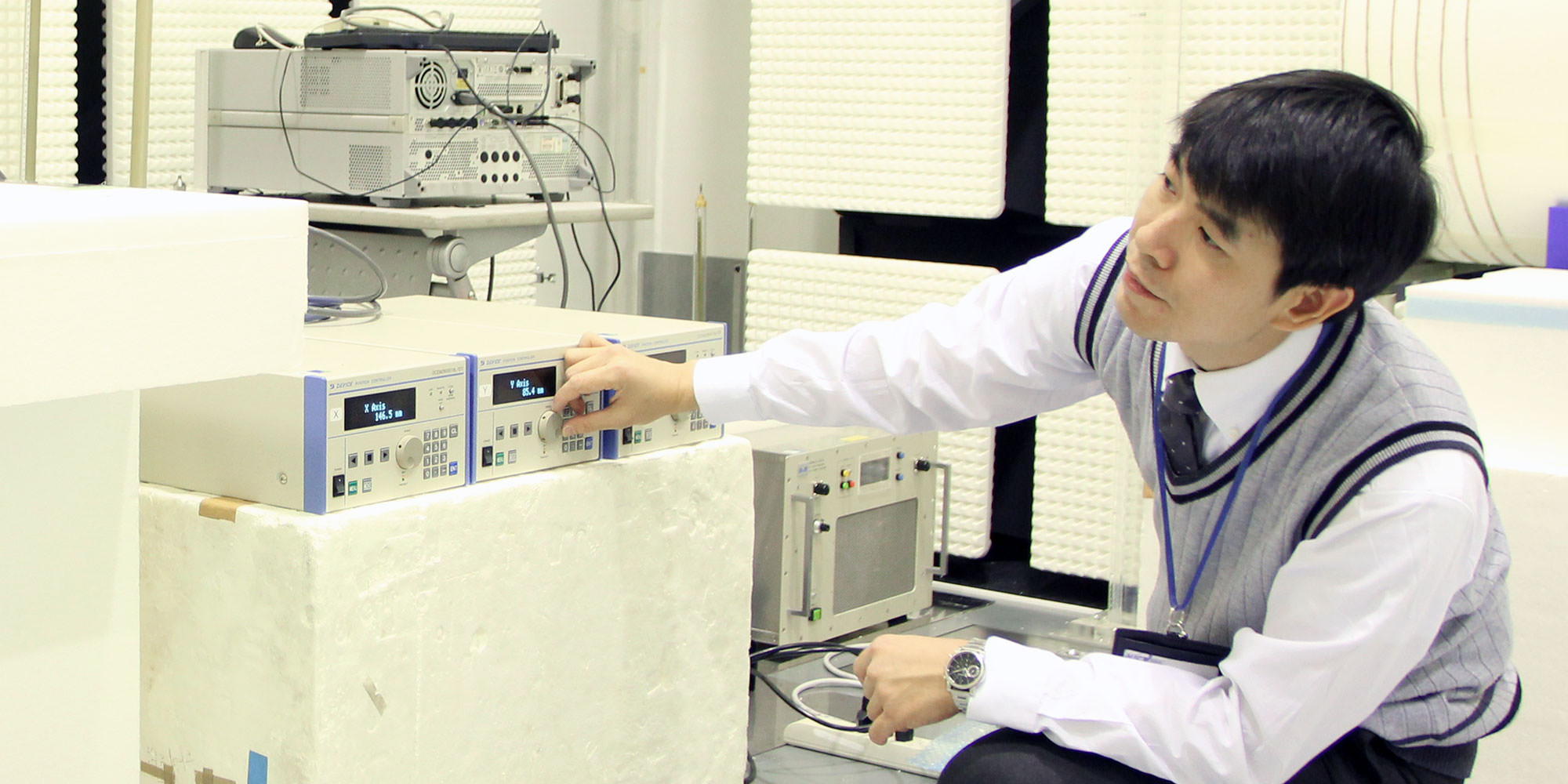
Senior Researcher
CHAKAROTHAI
JerdvisanopPh.D. (Engineering)
After earning his Ph.D. (Engineering) degree from Tohoku University, he joined NICT in 2013 and has since then been engaged in the research and development of precise calibration methods for measurement instruments, precise measurement methods, and fast numerical analysis techniques for electromagnetic fields.
- Home
- Researchers
- CHAKAROTHAI Jerdvisanop
Ambitious Goal for Highly Accurate and Reliable
Electromagnetic Field Measurements
Research on Precise Measurement and Numerical Analysis Techniques
for Pulsed Electromagnetic Waves
Introduction
In our daily lives, there has been an increase in the use of electronic devices that radiate electromagnetic fields, such as smartphones, wireless power transfer (WPT) systems in kHz and MHz bands, millimeter-wave (above 30 GHz) intervehicle radar for autonomous driving, and biosensing radar for monitoring services at home. Moreover, electromagnetic (EM) noise generated from high-speed electronic circuits and switching devices used in energy-saving home appliances is also increasing. It is, therefore, necessary to ensure that such electromagnetic noise does not interfere with other wireless networks nor affect human health, as well as to check the EM compatibility with the existing environment. Thus, we have conducted research studies on accurate measurement methods of pulsed EM waves, techniques for evaluating interference between devices, and accurate and fast numerical analysis techniques for human safety evaluation under various exposure conditions.

Research and development of precise measurement and numerical analysis techniques
Calibration technology for supporting precision measurement
Calibration technology is indispensable for ensuring the accuracy and reliability of the measurement results of various physical quantities such as electromagnetic field strength, which indicates the quality of radio waves. Calibration targets include fundamental measurement instruments (high-frequency power meters, high-frequency attenuators, frequency meters, voltage and current meters), antennas, and EM field probes. Figure 1 shows various types of EM field probe. Each probe has a different usable frequency range and operating environment. Therefore, calibration methods must be developed for each type of probe. In addition, calibration methods including phase information must be used to obtain the waveform information of pulsed electromagnetic fields.
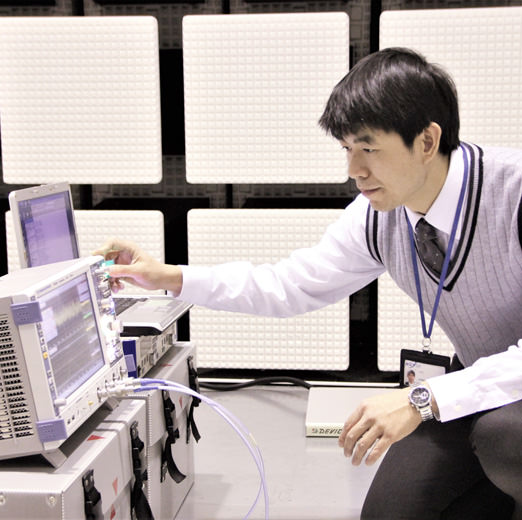
Senior Researcher Chakarothai during experiment
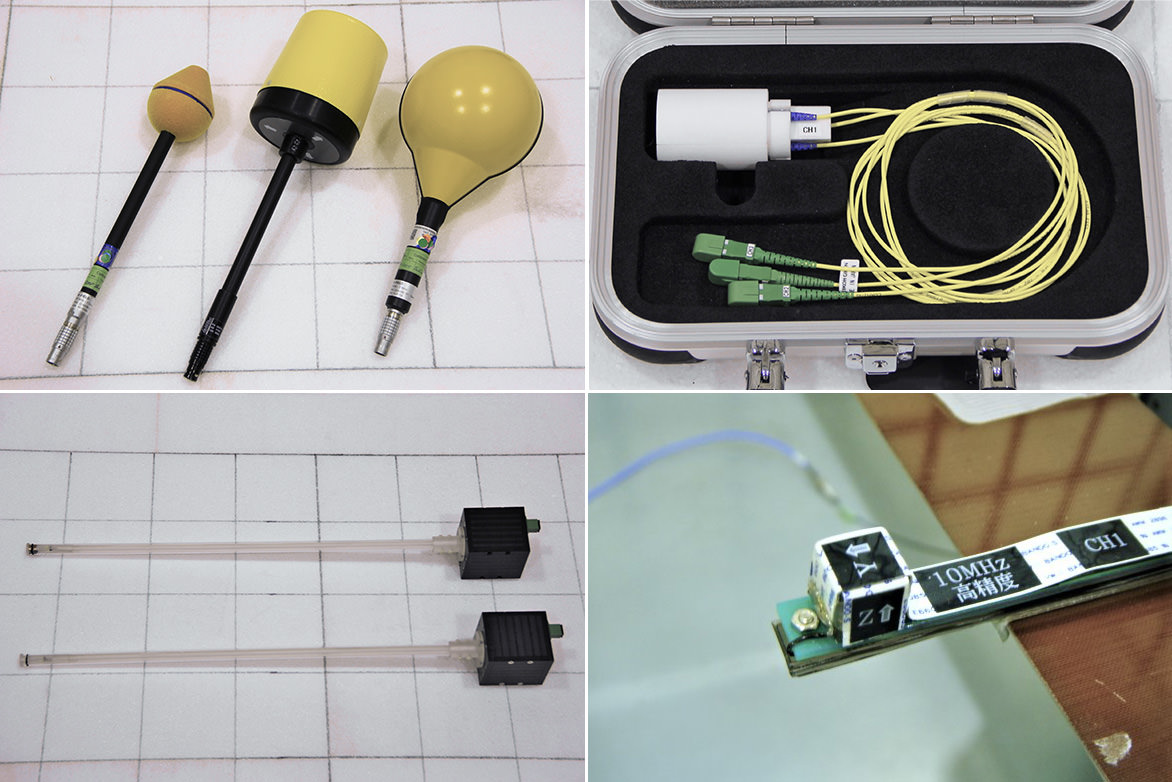
Electric and magnetic field probe (upper left), three-axis optical electric field probe (upper right),
optical electric field probe for use in liquids (lower left), broadband magnetic field probe (lower right)
Figure 1. Various probes for measuring electromagnetic fields
Our group has developed a high-precision calibration system for antennas and EM field probes used in measurements of radiated disturbances from devices using millimeter-wave radio waves (Fig. 2, left). The Comit? International Sp?cial des Perturbations Radio?lectriques (CISPR) is continuing its contribution in establishing international agreements on antenna calibration and measurement methods of radiated disturbances. Meanwhile, to evaluate EM safety for humans, it is necessary to measure the electric field intensity and the amount of EM power (or specific absorption rate, SAR) absorbed into a tissue-equivalent liquid that has electrical properties similar to those of humans. Therefore, our group has developed an optical electric field probe for use in the liquid and constructed a precise calibration system for the probe. This probe has been used to test the conformity to the Radio Protection Guidelines for humans in the vicinity of WPT systems in the MHz and kHz band frequencies (Fig. 2, right).
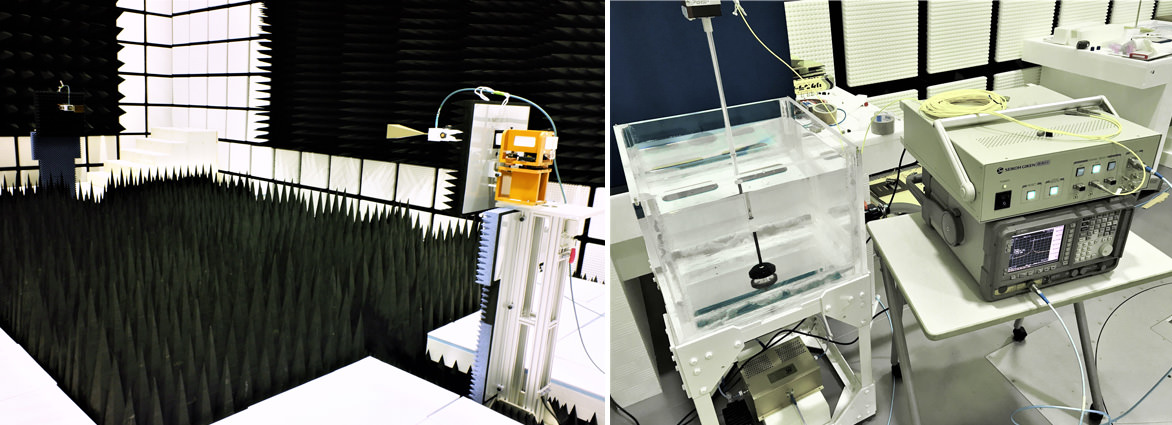
Millimeter-wave antenna calibration system (left) and calibration system for SAR probe in liquid (right)
Figure 2. Calibration system for antennas and electromagnetic field probes
Numerical techniques for analysis of pulsed electromagnetic waves
Before using WPT systems and other newly developed systems that radiate EM waves, it is necessary to investigate EM interferences to other devices and confirm their conformity in order to ensure the safety of the human body in advance. Therefore, we measure the EM field in the vicinity of the systems using a calibrated EM field probe, then use the measured data as input data in EM interference tests, and finally, exposure evaluations are carried out by numerical analyses. By our hybrid method, it is possible to simulate rapidly EM interference experiments and exposure evaluations under various conditions without conducting expensive and prolonged large-scale experiments. Our research group can measure both intensity and phase information of the magnetic field strongly radiated in the vicinity of a WPT system that transmits several kW of electric power, deriving the internal electric field intensity generated in a human body by EM analyses, and can evaluate the compliance of the WPT system to the Radio Protection Guidelines (Fig. 3).
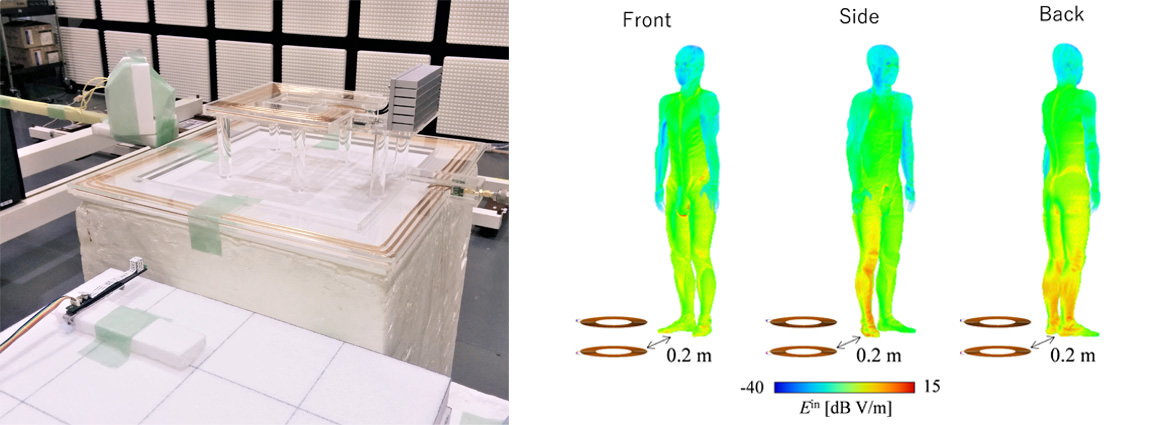
Magnetic field measurement in the vicinity of a WPT system (left) and human exposure assessment using measured data (right)
Figure 3. Electromagnetic field measurement and numerical analysis for evaluating the compliance of WPT systems
(Jerdvisanop Chakarothai, et al. IEEE Trans. Microw. Theory Techn., 2018, vol. 66, no. 3, pp. 1543-1552)
In addition, our research group has also developed a new algorithm for incorporating wideband frequency dispersion of biological tissues, the electrical properties of which depend on the frequency, into time-domain numerical analyses for calculating absorbed EM energy. This makes it possible to evaluate human exposure to pulsed electromagnetic waves for the first time (Fig. 4). This technology also enables us to accurately determine the amount of transient electromagnetic energy absorbed into the human body in a short period of time to investigate the effects of pulsed EM waves on the human body. In addition to the assessment of human exposure to pulsed EM waves, it is also possible to apply our developed method in various research areas, such as the design of broadband antennas in the vicinity of the human body, the design of wireless in-body or on-body communication systems, and nondestructive measurements using terahertz band pulses.
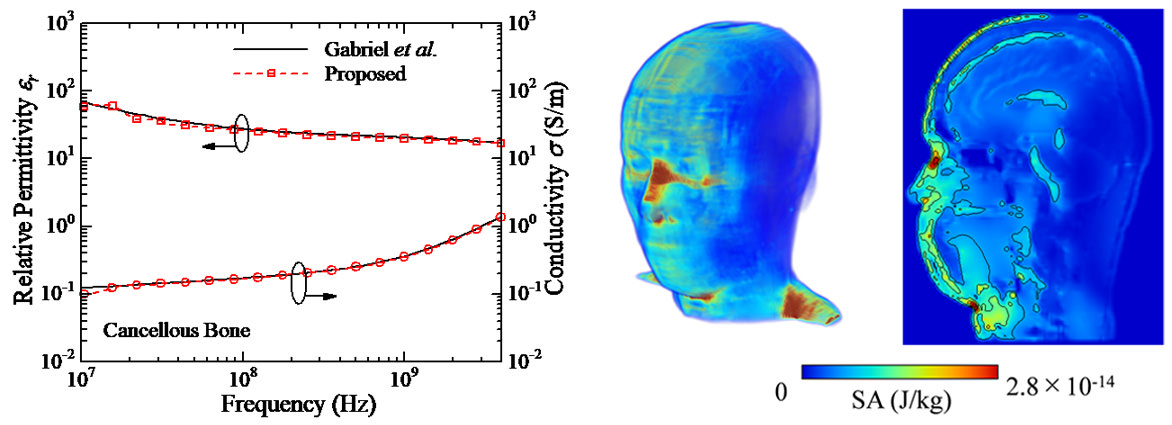
Frequency dispersion characteristics of electrical constants of cancellous bone (left) and exposure assessment to broadband pulsed electromagnetic fields (right)
Figure 4. Exposure assessment using our developed algorithm
(Jerdvisanop Chakarothai, et al. IEEE Trans. Antennas Propagat., 2018, vol. 66, no. 10, pp. 5397-5408)
Future prospects and issues
It is necessary to protect also the nonstationary electromagnetic environment, which will become more complex owing to the spatial densification of wireless devices as a result of the introduction of completely autonomous control technologies (such as autonomous driving systems) that are expected to be extensively used in the near future. To achieve this goal, we must develop measurement systems and methods to accurately capture instantaneous pulse electromagnetic waves and evaluate EM interference to other devices and effects due to human exposure. We will also contribute to the international standardization of our developed EM analysis and measurement methods. We believe that it is essential to cooperate with many researchers from research institutes, universities, and companies in Japan and overseas. We will actively work to establish a system that enables cooperation with people from various fields by using our developed technologies.

In front of Building No. 3
- Home
- Researchers
- CHAKAROTHAI Jerdvisanop